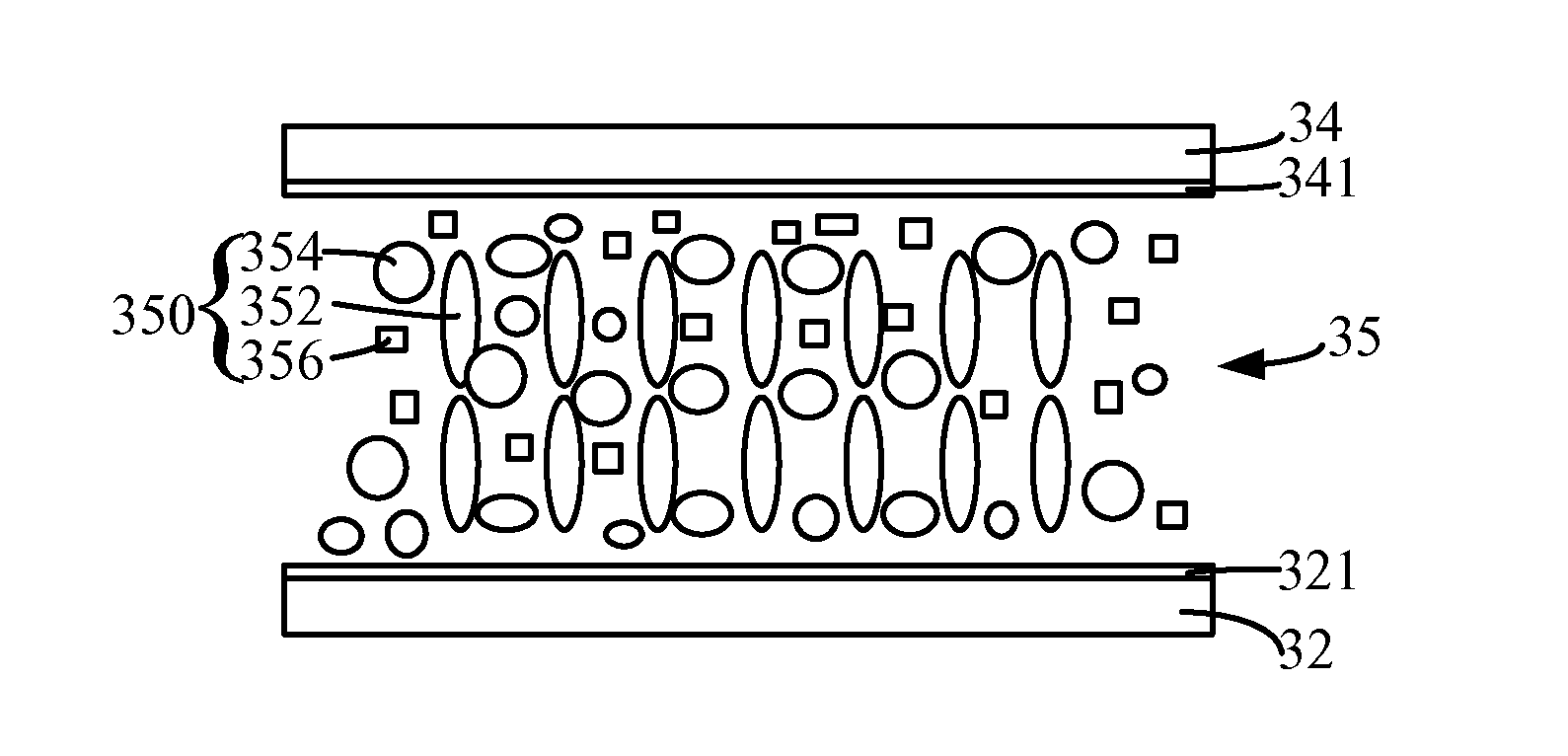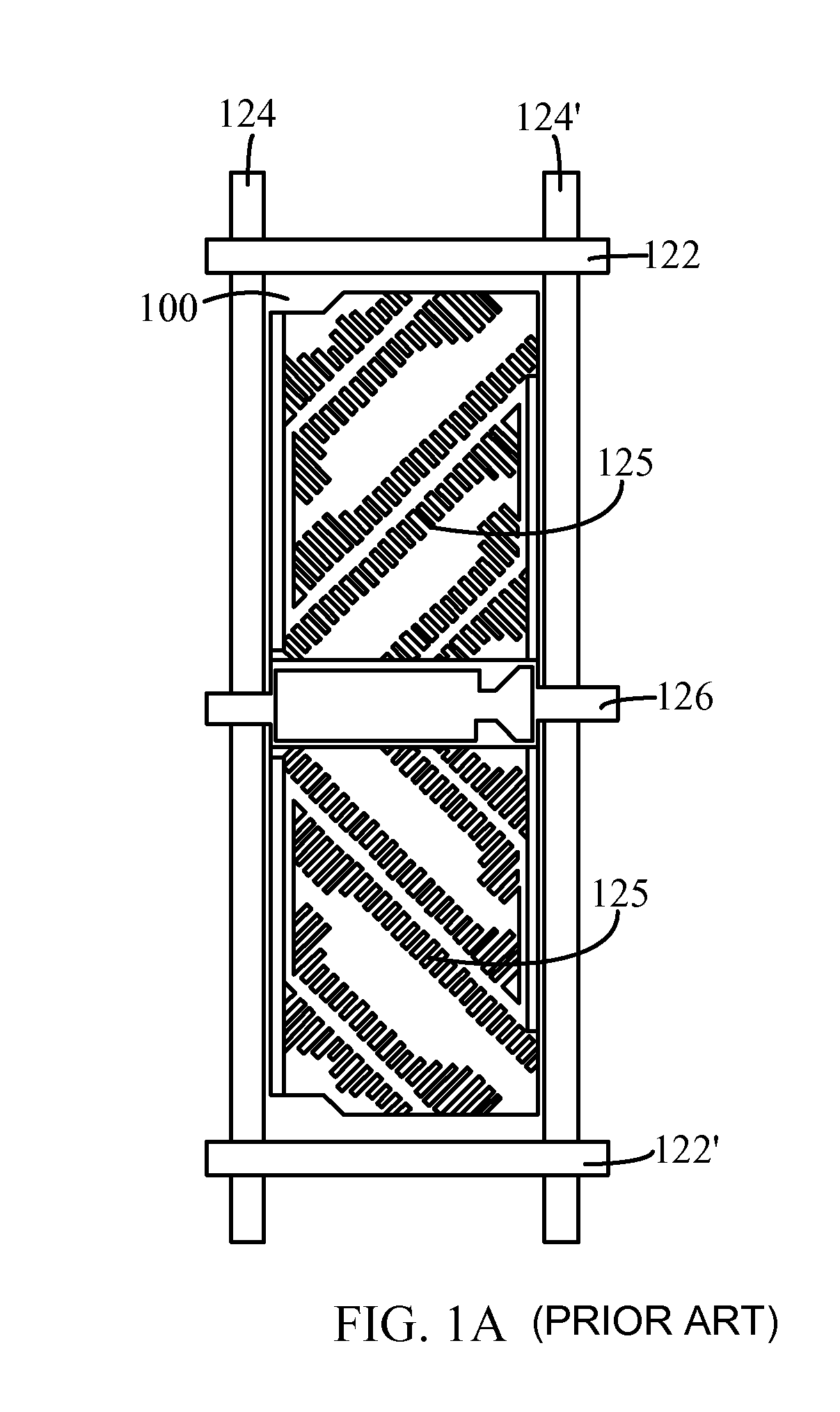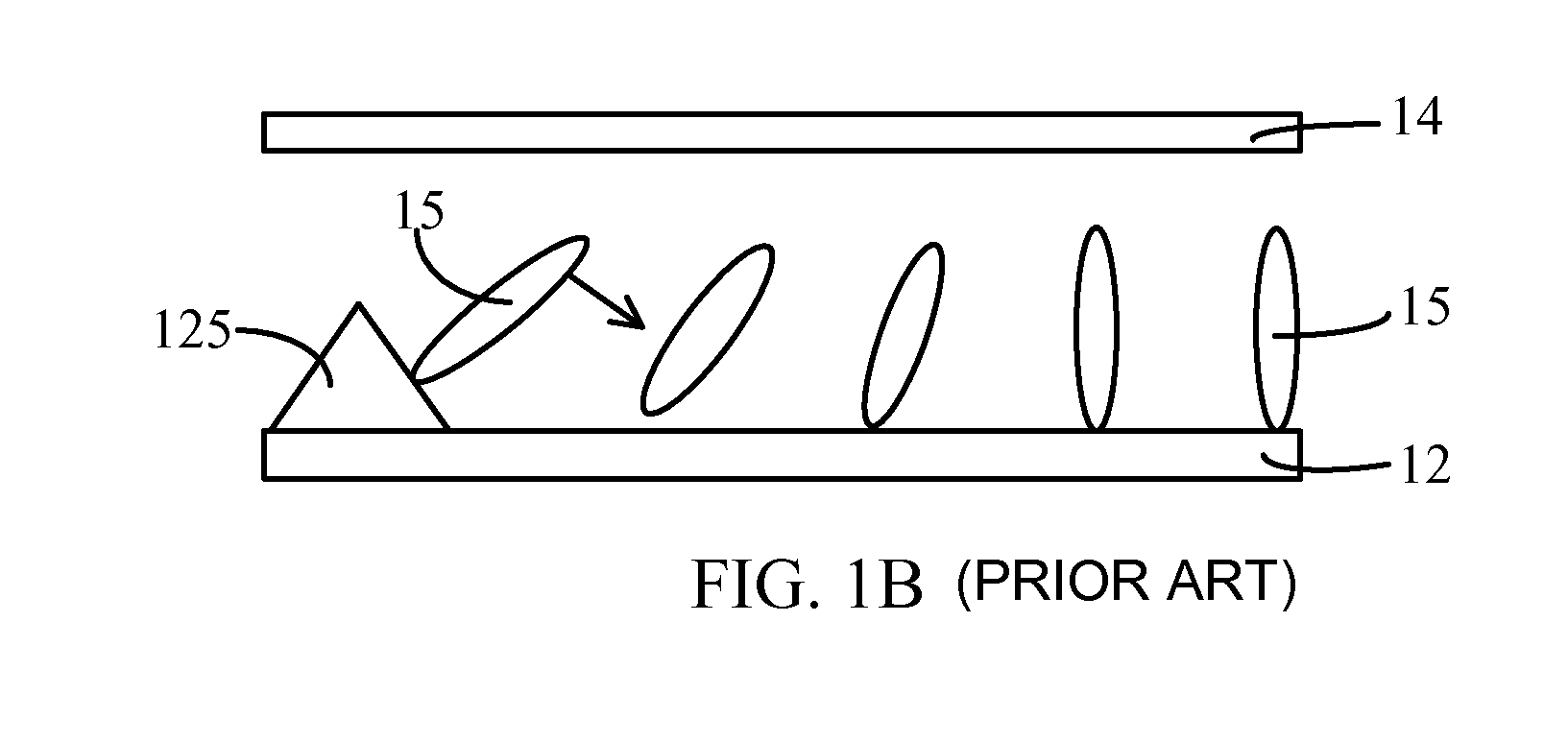Liquid crystal alignment process
a liquid crystal alignment and process technology, applied in the field of liquid crystal panel alignment process, can solve the problems of reducing the penetration rate, affecting the quality of images, and expensive equipment, so as to improve the efficiency of the exposure procedure, simplify the manufacturing process, and reduce the time to manufacture products
- Summary
- Abstract
- Description
- Claims
- Application Information
AI Technical Summary
Benefits of technology
Problems solved by technology
Method used
Image
Examples
Embodiment Construction
[0030]Please refer to FIGS. 3A to 3D which are diagrams showing a flow scheme of a liquid crystal alignment process implemented according to the present invention. As shown in FIG. 3A, a first substrate 32 and a second substrate 34 parallel to the first substrate 32 are provided. The first substrate 32 can be a thin-film transistor (TFT) array substrate. The second substrate 34 can be a substrate opposite to the TFT array substrate, or specifically, a color filter substrate (CF substrate). A first conductive layer 321 and a second conductive layer 341 are respectively disposed on the opposite surfaces of the first substrate 32 and the second substrate 34. The conductive layers 321 and 341 can be transparent indium tin oxide (ITO) films. A liquid crystal accommodating space 35 is formed between the first and second substrates 32 and 34, and more specifically, is formed between the first and second conductive layers 321 and 341.
[0031]As shown in FIG. 3A, a liquid crystal composition 3...
PUM
 Login to View More
Login to View More Abstract
Description
Claims
Application Information
 Login to View More
Login to View More - R&D
- Intellectual Property
- Life Sciences
- Materials
- Tech Scout
- Unparalleled Data Quality
- Higher Quality Content
- 60% Fewer Hallucinations
Browse by: Latest US Patents, China's latest patents, Technical Efficacy Thesaurus, Application Domain, Technology Topic, Popular Technical Reports.
© 2025 PatSnap. All rights reserved.Legal|Privacy policy|Modern Slavery Act Transparency Statement|Sitemap|About US| Contact US: help@patsnap.com



